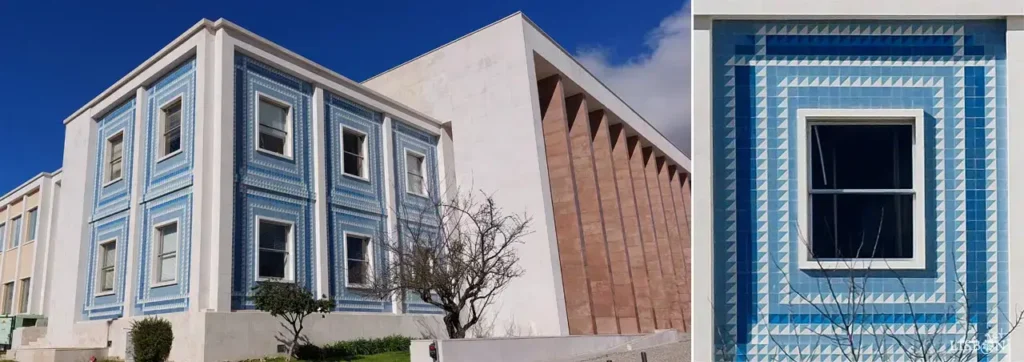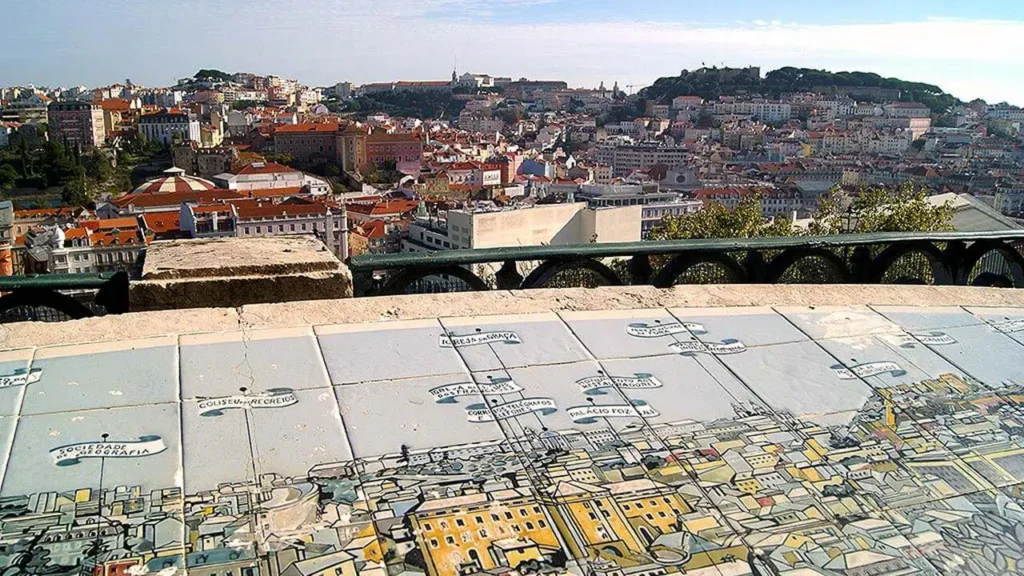Updated on 21 June 2024
Original article published on 20 January 2021
Have you taken an attentive look at the tiled panoramas of Lisbon that are in four viewpoints of the city? If not, it’s time to break your routine and visit these places where the panels have been for nearly 60 years, indicating the interest points that can be seen from there.
It is particularities like this that getLISBON proposes to draw your attention to. How many people have passed by these panels without seeing them, how many ignore their authorship…
Let’s get to know the artist who designed these tiled panoramas of Lisbon and the places where you can admire them. You’ll want to know them!
Get to know Lisbon’s historic neighbourhoods in a guided tour and discover unmissable places of this magnificent city.
Fred Kradolfer, the Swiss Designer in Portugal
Fred Kradolfer was a graphic designer who carried out his work in Portugal between the 1920s and 1930s. The importance and diversity of his work, as well as the pioneering initiative of introducing in the country a modern graphic language, make this artist a remarkable figure in the scope of Portuguese design.
Born in Zurich in 1903, he graduated in jewelry in this city and in graphic design in the fine art academy in Berlin, as well as in architecture in the academy of Munich.
After having worked as a decorator and store window designer in cities such as Rotterdam, Brussels and Paris, he settled down in Lisbon in 1824, where he lived until he passed away in 1968.
One of his addresses was the house of evocative plaques in Bairro Alto. This curious building presents nothing less than seven plaques referring to many other notable people who lived there in different eras.
Fred Kradolfer developed a truly revolutionary work when it comes to graphic communication in all its aspects, focusing on the stylisation of the forms articulated with the text.
Influencer of the second generation of Portuguese modernist artists, he worked with names such as Jorge Barradas, Stuart de Carvalhais, Bernardo Marques, Carlos Botelho and Maria Keil, among many others.
He was part of the team of the National Propaganda Secretariat known as “the team of António Ferro”, which allowed him a vast production with great visibility.

Among many other projects he created: advertising posters; labels; covers and illustrations of books and magazines; stamps; shop windows; decorations; stained glass …
He took part in international exhibitions such as: the Colonial Exhibition in 1931 and the International Exhibition of Art and Technology in Modern Life in 1937 in Paris; the New York World’s Fair in 1939; and the Portuguese World Exhibition in 1940…


Tiles by Fred Kradolfer
Fred Kradolfer has also done many tile projects.
He created designs for lambrilhas, small tiles with single figures, which represent colourful typical Portuguese motifs. These tiles, which were very popular in the 30s, are still today produced by Viúva Lamego Factory.

He produced ceramic plates with the name of the fishing boats of Boca do Inferno, in Cascais, but they’ve unfortunately already disappeared.
And he also had even larger projects such as: two panels for the interior of the Infante Santo Hotel, the decoration of the Soponata headquarters building, both in Lisbon; or the entire tile covering of the chapel of Campo Militar de Santa Margarida, in Constância.
The Tiles of the Rectorate

One of the most significant works is the unmistakable cladding of the lateral bodies of the Rectorate building of the Universidade de Lisboa at the University Campus.
After the rejection of proposals by Almada Negreiros and Manuel Cargaleiro, the project was awarded to Fred Kradolfer, who proposed a modernist solution that simultaneously respected the medium and the tradition of 16th-century Portuguese tilework.
The excellence of this work is magnificently described in the words of António Barros Veloso in his article “A Perspective on Portuguese Tilework: Regarding the Tiles of the Rectorate’s Façade” published in the periodical Lisboa Revista Municipal, No. 21, in 1987:
“(…) The solution (…) is remarkable in many aspects. Firstly, for the beauty and balance of the composition. Secondly, for the apparent simplicity of the design, which clearly incorporates extensive reflection. Finally, for its perfect integration into the architecture, where nothing was overlooked: neither the function of the lateral bodies in relation to the whole, nor the openings, nor the projections on the façade’s surface.
However, while all these aspects are noteworthy, the most important is the knowledge Kradolfer revealed of traditional Portuguese tilework and the capacity of the tiles to generate rhythms and serve as a basis for compositions on their own. By clearly choosing to enhance the quadrangular elements and rejecting the use of tiles as mere supports for painting, he demonstrated a perfect understanding of the ‘checkered’ tiles of the 16th century, whose spirit he managed to recapture in a work of undeniable modernity. (…)”
António José Barros Veloso is the co-author with Isabel Almasqué of the article “Art Nouveau Tiles in Lisbon“, published in our “getLISBON invites” series, which we recommend reading.
Tiled Panoramas of Lisbon

But today in this article we want to highlight the tiled panoramas of Lisbon by Fred Kradolfer.
In the early 60s the City Council of Lisbon ordered Kradolfer tiled panoramas, which were destined for the viewpoints of the city. They’re in total five panels, produced in different years in the Viúva Lamego Factory.
The oldest one dates back to 1962 and is located in the viewpoint of São Pedro de Alcântara Garden. In the following year two more were produced: one for São Jorge Castle and the second one for Senhora do Monte Viewpoint, in Graça. The last two were produced in 1965 and were destined for Monte Agudo Viewpoint and, once again, for the Senhora do Monte one.
All panels present the name of the viewpoint where they’re located and the respective date in roman numbers, except for the one in Monte Agudo, in which the numbers are arabic.
Another exception in this panel is the fact that the symbol of the city of Lisbon, a boat with the crows of Saint Vicent, was replaced by the initials C.M.L (City Council of Lisbon acronym). There’s no reference to the city in the latest panel of the Senhora do Monte Viewpoint.
A compass is present in the panels of São Jorge Castle, in the oldest of Senhora do Monte, as well as in the Monte Agudo one.
In all panels we find a reference to the factory where they were produced and only the panels of Senhora do Monte don’t seem to have been signed by the author.
In the colourful panels are represented the views that can be seen from the places they’re located in. Churches, monuments, public interest buildings, among others are identified there… In the oldest panel, the one in São Pedro de Alcântara, these names are inscribed in small phylacteries that cover the entire panorama.
Now that you know the story of the tiled panoramas of Lisbon, go to the different viewpoints, admire the city from various perspectives and observe the panels with new eyes. 😉
| Never miss another article | Subscribe here |
The project getLISBON has been very rewarding and we want to continue revealing the singularities of fascinating Lisbon.
Help us keep this project alive!
By using these links to make your reservations you’ll be supporting us. With no extra costs!
• Looking for a different experience? We can create a customised itinerary based on your interests. Contact us!
• Or if you prefer tours and other activities in various destinations, take a look at GetYourGuide.
• Save time and money with a flexible Lisbon Card!




